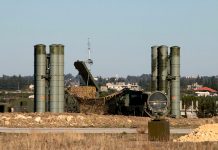
The above image is for representational purposes only.
China’s advancements in hypersonic technology continue to push the envelope, with the recent test of the MD-19 hypersonic aircraft, launched from a TB-001 drone, marking a significant milestone. Capable of achieving hypersonic speeds and executing horizontal landings on conventional runways, the MD-19 represents a leap forward in both performance and operational versatility.
The MD-19’s development highlights China’s growing prowess in integrating unmanned aerial systems (UAS) with hypersonic technology, providing a more cost-effective and flexible alternative to traditional takeoff methods. Launched from the TB-001, a medium-altitude, long-endurance combat drone, the system benefits from reduced energy consumption and operational risk, especially in contested environments.
What sets the MD-19 apart is its ability to transition from hypersonic speeds to controlled subsonic flight, allowing for a horizontal landing. This capability, reportedly a world first for hypersonic aircraft, opens the door to greater reusability, which in turn facilitates frequent testing and mission execution. Unlike traditional hypersonic platforms, which are often single-use, the MD-19’s ability to safely return to a runway for re-launch offers significant operational and logistical advantages.
Aerodynamically, the MD-19’s design emphasizes high-speed efficiency, with a streamlined fuselage, narrow nose, and angled vertical stabilizers for improved stability. Its lack of air intakes suggests the use of a rocket engine, likely chosen for its ability to reach and maintain hypersonic speeds.
A notable test scenario includes the MD-19 being deployed from near-orbital altitude via a high-altitude balloon, indicating ongoing evaluations under varied flight conditions. This suggests China is testing the aircraft across a range of altitudes and speeds to refine its capabilities. Although the timeline of these tests remains unclear, reports suggest they may have commenced as early as 2020.
The TB-001 drone also enhances the strategic flexibility of the MD-19, acting as a low-profile launch platform that can deploy the hypersonic aircraft deep into hostile airspace, minimizing detection risks. This combination of stealth and extended range could make the TB-001-MD-19 system a valuable asset for future hypersonic weapons or reconnaissance missions.
From a tactical perspective, the MD-19 serves as both a technology demonstrator and a potential precursor to operational hypersonic platforms. Its development could inform the creation of advanced strike vehicles, reconnaissance drones, or maneuverable warheads capable of penetrating modern defense systems.
In terms of reusability, the MD-19’s horizontal landing ability marks a pivotal shift in the design philosophy of hypersonic systems. This capability allows for rapid turnaround times, essential in real-world combat situations. Additionally, it eliminates the need for specialized recovery infrastructure, making it deployable across various environments.
While the MD-19 is still primarily a testbed for hypersonic flight dynamics, its successful integration of horizontal landing sets it apart from current hypersonic systems, which are often destroyed upon re-entry or impact. The platform’s potential to serve as a reusable, high-speed asset underscores China’s growing confidence in its hypersonic ambitions and its ability to set new benchmarks in the field.
This breakthrough is significant not only for its technological implications but also for its operational impact. The MD-19’s ability to achieve hypersonic speeds and land horizontally demonstrates a key step in advancing the reusability of hypersonic systems. As China continues to refine its capabilities, the MD-19 could become a foundational platform for future high-speed, multi-domain warfare.





